- What are mudras?
- Types of mudras
- Hand mudras meaning and benefits
- How do mudras work?
- Mudra practice tips
- Are mudras scientific?
- Common Questions
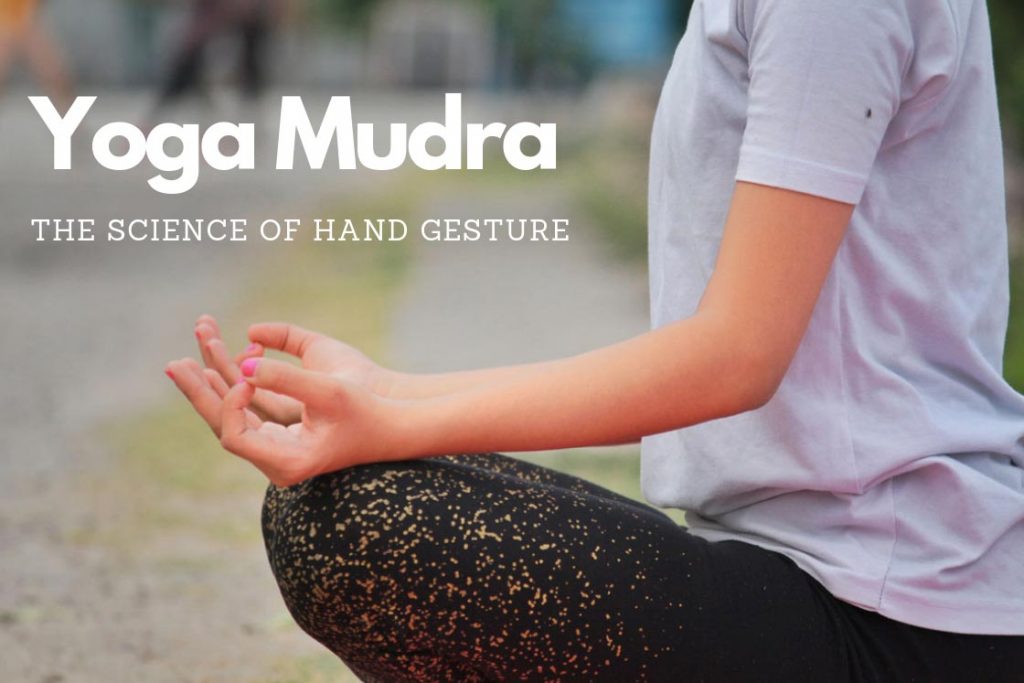
Welcome to the world of yoga mudra, where the subtle language of the body takes center stage. In this article, we uncover the significance of mudras – yoga gestures that go beyond mere movements. These silent expressions, used during meditation, asanas, and pranayamas, hold the power to shape our mental state and enhance our well-being.
Mudras, in their simplicity, become a key to improving the connection between mind and body. From promoting a calming state of mind to addressing various health conditions, practicing some mudras everyday offer a unique path to physical and mental healing.
In this comprehensive guide on yoga mudras, we unravel the meanings and benefits of these simple yet powerful gestures. We will see different types of yoga mudras which are not limited merely to hand gesture but also involve eyes, tongue, ear or even whole body. We will also understand the working of mudras and their scientific aspect.
Mudras are more than simple hand gestures they are a powerful way to communicate with your subtle body and balance energy in yoga. By understanding and practicing mudras, you can unlock deeper awareness, harmony, and inner transformation. Let’s explore their meaning and benefits together.
What are mudras in yoga?
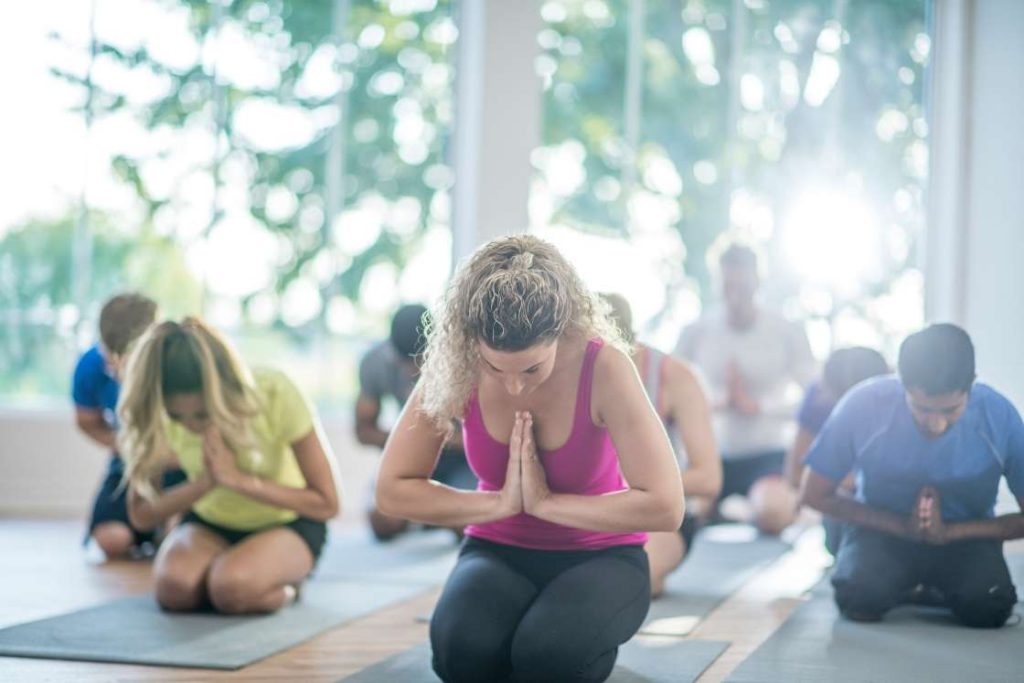
In yoga, a mudra isn’t just a hand gesture; it’s like a symbol that connects to your inner feelings. Symbols show ideas visually, and mudras are like lively yoga symbols expressing different feelings inside you.
For instance, consider the “Anjali Mudra,” where you bring your palms together in a prayer-like gesture. This mudra symbolizes respect, gratitude, and the unity of opposites. When you perform the Anjali Mudra, it’s not just a hand movement; it’s like activating a symbol that brings forth a sense of reverence and connection within your yoga practice. Much like how the heart symbol instantly triggers thoughts of love, a mudra symbol can evoke specific feelings and states of consciousness during your yoga journey.
Think of mudras as special hand movements in yoga. They don’t just make your body move; they also boost the energy flowing inside you. The word “mudra” means more than just a movement – it’s like sealing in energy. It helps keep the energy inside you, making your mind and body work together better.
So, doing mudras isn’t just about moving your hands; it’s like creating a seal for your energy. This helps you concentrate during yoga and can even make your body and mind feel better, helping with both physical and mental health.
Meaning and significance
Mudra, from the Sanskrit phrase “Mudam anandam dadati iti mudra,” translates to actions that bring pleasure or bliss. According to the ancient tantric text, “Kularnava Tantra,” Sanskrit word ‘mudra’ comes from ‘mudam’ meaning ‘bliss’ and ‘drava’ meaning ‘to draw forth.’ This suggests that mudras possess the unique ability to draw out the hidden joy within us.
Engaging in a mudra directs the flow of Prana, or life force, in a rhythmic manner. The longer we maintain the mudra, the smoother the prana flow becomes. This rhythmic flow induces a shift in consciousness, fostering a serene state of mind.
While yoga harnesses mudras for therapeutic purposes, these hand gestures extend beyond to traditions like Hinduism, Buddhism, and Jainism. In these traditions, mudras play roles in classical rituals, folk dances, and mantra chanting, revealing their multifaceted nature that combines artistry with profound meaning.
How many types of mudras are in yoga?

Yoga Mudras FREE PDF Link
In yoga, there are five types of mudras, each categorized by the body parts involved in creating the gesture. The most commonly practiced ones are hand mudras, known as “hasta mudra.”
- Hasta Mudra (Hand Gestures): Executed using hands and fingers.
- Kaya Mudra (Postural Gestures): Encompasses the entire body.
- Mana Mudra (Head Gestures): Engages sense organs such as eyes, nose, tongue, lips, and ears.
- Bandha Mudra (Lock Gestures): Utilizes three bandhas, specifically subtle skeletal muscles like vocal, respiratory, and pelvis.
- Adhara Mudra (Perineal Gestures): Involves the muscles of the pelvis.
Let’s explore each of these types of mudra one by one;
1. Hand mudras
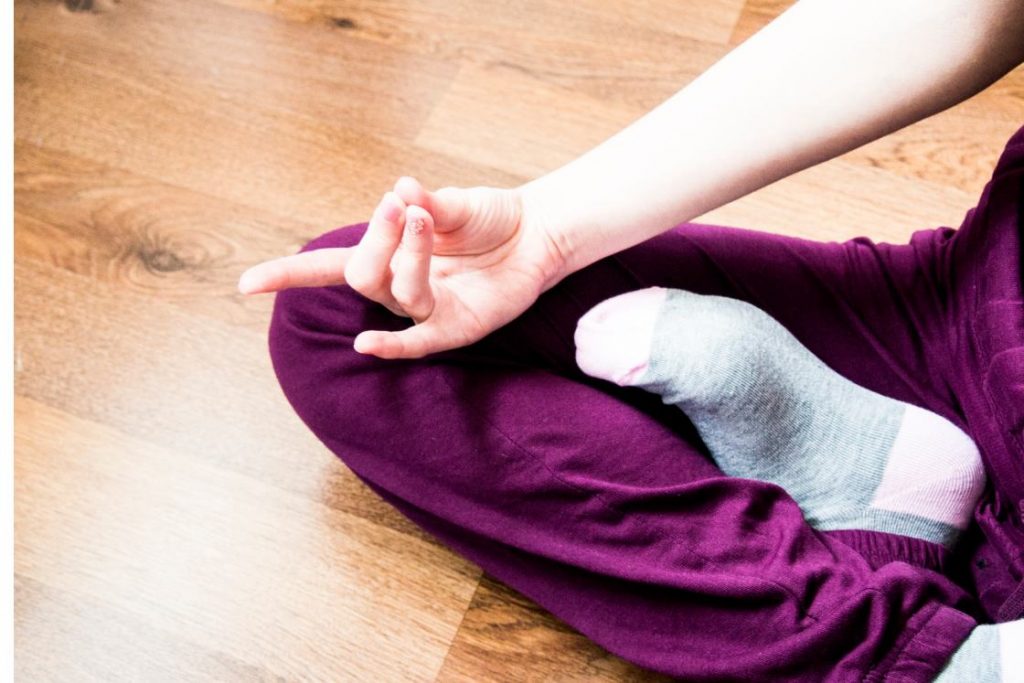
Hand mudras take precedence among various types, finding significant application in meditation and pranayama. Rooted in the five elements theory, these mudras are renowned for their therapeutic advantages.
In the practice of hand mudras, diverse gestures are formed using a combination of fingers, and practitioners often hold them for extended periods. The ensuing list delineates various hand mudras, each carrying distinct meanings and associated benefits.
*Scroll the table horizontally to see mudra pictures and benefits
| S.N. | Mudra | Picture | Description | Benefits |
|---|---|---|---|---|
| 1. | Gyan Mudra |  | Index fingertip joins thumb, palm upwards. Rest three fingers extended. | Enhances memory, and concentration. Gives a sense of security, and groundedness. |
| 2. | Apana Mudra |  | Middle and ring fingertips join thumb. Rest two fingers extended. | Helpful in diabetes and constipation. Strengthens leg joints |
| 3. | Prana Mudra |  | Ring and little fingertips join thumb. Rest two fingers extended. | Prevents hair fall and Increases lung efficiency. |
| 4. | Surya Mudra |  | Thumb pressing on second phalanx of ring finger and ring fingertip touches the base of thumb. Rest three fingers extended. | Panacea mudra for weight loss, maintain metabolism and reduce Cholesterol. |
| 5. | Varun Mudra |  | Thumb joins little fingertip. Rest three fingers extended. | Helpful in dehydration, clears blood and glows skin. |
| 6. | Back Mudra |  | Right hand – Thumb touches middle and ring finger Left hand – Thumb touches index finger | Relieves back pain and muscle cramps. |
| 7. | Apana Vayu Mudra |  | Thumb joins middle and ring fingertip while index finger bend to the base of thumb. | Best mudra for heart problems, prevents heart attack and improves digestion. |
| 8. | Shunya Mudra |  | Thumb pressing second phalanx of middle finger. Rest three fingers extended | Treat ear-related problems, cure numbness and motion sickness. |
| 9. | Rudra Mudra |  | Thumb touching tip of ring and index fingers. Rest two fingers extended. | Cure of dizziness, lowers blood pressure and burn belly fat. |
| 10. | Adi Mudra |  | Thumb fold inside the curled fingers. | Increase oxygen flow in blood, gives mental clarity |
| 11. | Linga Mudra |  | Both hands fingers clasped and left thumb is erect | Cures breathing disorders, Prevent hypothermia |
| 12. | Anjali Mudra |  | Both hands finger align in front of each other, tip upward | Balance left and right hemisphere, improves focus. |
| 13. | Akash Mudra |  | Thumb touches tip of middle finger. Rest three fingers extended. | Helpful in migraine, hearing loss, and overcome calcium deficiency. |
| 14. | Padma Mudra |  | Little finger and thumb touches side-by-side then spread all fingers in a circular direction. | Brings creativity, calms the anxious mind, and balances heart chakra. |
| 15. | Ganesha Mudra |  | Right hand back, left hand forward – interlock fingers at second phalanx from inside. | Increase lung capacity, reduce neck pain, and boost self-confidence. |
| 16. | Matangi Mudra |  | Interlace both hand fingers and then point both middle fingers up. | Evoke self-confidence, helps in insomnia and relax jaw muscles. |
| 17. | Dharmachakra Mudra |  | Make gyan mudra with both hands. Now touch right gyan mudra with left middle fingertip facing outside. | Deepen meditation, gives grounding sense, and calms the mind. |
| 18. | Brahma Mudra |  | Fold thumb inside curl fingers then press fingers at knuckles. | Balance thyroid gland secretion, helpful in irregular menstrual cycle. |
| 19. | Vajra Mudra |  | Middle, ring and little fingertips touches thumb. Index finger extended. | Removes stiffness of muscles, detoxes the lungs. |
| 20. | Surabhi Mudra |  | Ring fingertips of both hand touches opposite little fingertips, and in same manner, middle fingertips touches opposite index fingertips | Enhances creativity and helpful in getting wish fulfillment. |
| 21. | Bhumisparsha Mudra |  | Left hand on lap facing upward, and the right hand points to the ground touching | Increase concentration removes negativity and aggression. |
| 22. | Shankh Mudra |  | Encircle left thumb with 4 fingers of right hand and then extend left hand 4 fingers and right hand up. | Overcomes fear of speaking, purifies nadis, and improve functioning of the larynx (voice box). |
| 23. | Hakini Mudra |  | Join all fingertips and thumb of both hands each other and spread fingers wide. | Best mudra to increase brain power and balances 3 doshas. |
| 24. | Kubera Mudra |  | Join the index and middle fingertips to the thumb tips. Then curl the little and ring fingertips to the palm. | Gives luck, confidence, and peacefulness. Opens blocked nose and ear. |
| 25. | Yoni Mudra |  | Join all fingertips to each other, stretch thumb upwards, then bend middle, ring, and little finger so that the back of the fingers are touching. | Helpful in fertility problems, and removes all tiredness and stress when practiced at night before going to sleep |
| 26. | Jnana Mudra |  | Thumb and index fingertip touching, rest fingers extended. For beginners – Index fingertip touching inside root of thumb. Palm facing up | Improves concentration, endocrine system and calms the mind. |
| 27. | Vishnu Mudra |  | Index and middle finger bend down towards palm. | Reduce anger, purify nadis, and helpful in heart diseases. |
| 28. | Vayu Mudra |  | Thumb pressing second phalanx of index finger | Overcome gastric problems and builds immunity. |
| 29. | Shakti Mudra |  | Encircle thumb inside index and middle fingers, touch them at back, raise ring and little fingertips – extend them up. | Helpful in sleeplessness, rectifies the painful urination problem and menstruation discomforts |
| 30. | Abhaya Mudra |  | Lift right hand to the chest level then open palm facing to the front. | Helps in conquering the fear and settle emotions. |
| 31. | Dhyana Mudra |  | Place right hand over left hand so fingers aligning each other. Now touch both thumb tip. | Deepen the levels of meditation and activate left and right side of brain. |
| 32. | Chinmaya Mudra |  | Curl middle, ring and little finger to palm and touch index fingertip with thumb. | Prevents memory loss and cures insomnia. |
| 33. | Prithvi Mudra |  | Ring finger tip touching thumb. Rest three fingers extended. | Weight gain and healing body tissues. |
| 34. | Karana Mudra |  | Middle finger tip touching thumb, ring finger curl parallel to middle, and rest two fingers extended. | Fill mind with positivity, drives energy forces inwards. |
| 35. | Bhramara Mudra |  | Index finger curl down to base of thumb, thumb touching outside of middle finger, and rest two fingers extended. | Beneficial to get rid of allergies, and treats common cold, running nose, tonsillitis. |
| 36. | Pushan Mudra |  | Right hand – touch index and middle finger tip to thumb tip. Left hand – touch ring and middle finger tip to thumb tip. Rest two fingers extended. | Best mudra for digestion, eliminate blockage and toxins. Also, cures nausea, flatulence, constipation. |
| 37. | Mushti Mudra |  | Hold hand in a fist with thumb placed over the ring finger. | Relieve negative emotions and lower blood pressure. |
| 38. | Garuda Mudra |  | Hold onto your thumbs. Place right hand on the apex of left hand. | Inculcate fearlessness, and useful in get rid of lethargy and fatigue |
| 39. | Vitraka Mudra |  | Join the tips of the thumb and the index fingers together, palm facing forward at the heart level. | Encourages wisdom, uplifts energy, and develops a sense of clarity |
| 40. | Merudanda Mudra |  | Extend thumbs of each hand upward, and curl other fingers into the palm. | Strengthens the spine and eliminates restlessness from the mind. |
| 41. | Varada Mudra |  | Right hand held out, with palm uppermost and the fingers pointing downwards. | Make seeker humble, cultivate forgiveness quality, |
| 42. | Bhairava Mudra |  | Place right hand on the cup of your left hand. Tips of the fingers of both hands facing opposite directions. | Soothing and instant relieving effects on anxiety, stress, and mood swings |
| 43. | Asthma Mudra |  | Bend and press middle fingers of both hands at the fingernails. Palms should press together gently with the other fingers remaining straight. | Improves breathing, removes blockage and toxins from lung, |
| 44. | Uttarabodhi Mudra |  | Interlock both hand fingers. Now extend index fingers up, touching tip together and thumb downwards. | Boosts confidence, promotes optimism and inculcates fearlessness |
| 45. | Ushas Mudra |  | Clasp hand together with finger interlaced. Thumb pointing up. | Regulates irregular menses, regulates the proper hormonal flow. |
| 46. | Mahasirs Mudra |  | Touch index and middle finger tip with thumb tip, curl ring finger to base of thumb, and extend little finger. | Cures sinus issues, relieves eye strain and improves concentration |
| 47. | Kalesvara Mudra |  | Join first and second phalanx of both hand fingers, extend middle fingers up and join them. Join thumb below creating a heart shape. | Helpful to get rid of the habit of procrastination, brings serenity, and develops adaptability |
2. Kaya Mudra (Postural Gesture)
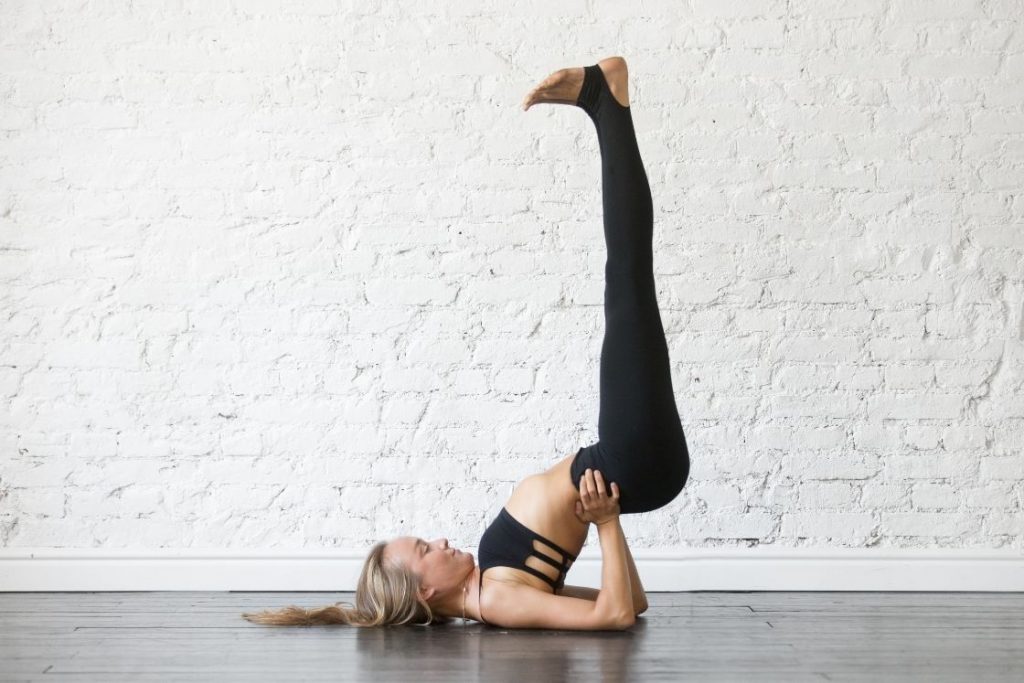
Kaya mudras involve using your whole body to make a gesture, kind of like striking a pose. They’re also called postural gestures because, just like in different yoga poses, your entire body gets involved. Holding these mudras needs strong focus and concentration, much like when you’re holding a specific yoga position.
*Scroll the table horizontally to see mudra pictures and benefits
| S.N. | Mudra | Meaning | Picture | Description | Benefits |
|---|---|---|---|---|---|
| 1. | Viparita Karani | Inverted gesture | 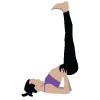 | Body in inverted posture on shoulders and the back is supported by hands. | Release tension from cramped feet & legs, increases appetite |
| 2. | YogaMudra | Psychic union pose | 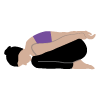 | In padmasana, catch the left wrist by the right hand at the back and bend forward to forehead touching the ground. | Improves muscle tone, stretches muscles of the trunk and the neck. |
| 3. | Pashinee Mudra | Folded psychic attitude | 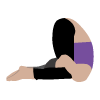 | From halasana, bend knees to touch the sides of ears and shoulders. Then wrap the arms tightly around the legs and relax | Increases spine flexibility and tones abdominal organs. |
| 4. | Manduki Mudra | Frog gesture |  | In bhadrasana close the mouth, then rotate tongue inside mouth touching upper palate. | Prevent graying of hair, aids in digestion, enhances the sense of taste |
| 5. | Tadagi Mudra | Gesture of the pond | 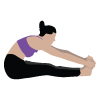 | From bending forward in dandasana, hold the breath, pull abdominal muscles in hollow the abdomen. | Relieves physical stress and reduces obesity. |
3. Mana Mudra (Head Mudra)
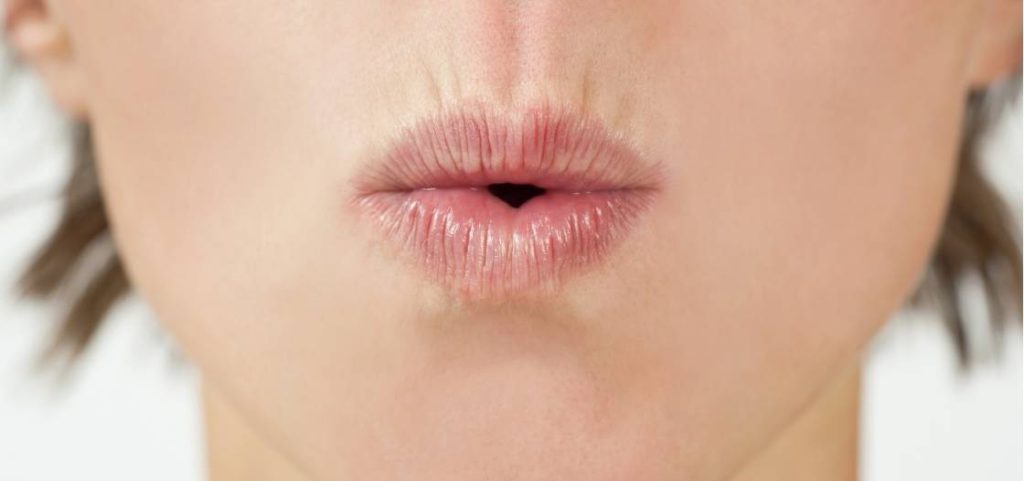
Mana means head. Mana mudras are mudras in which sense organs (eyes, nose, tongue, lips and ears) are involved to form the gesture. They are widely used to focus the mind in meditation (mainly in kundalini meditation), hence called head mudras.
Head mudras are so powerful that they can snap out us from instinctive habits (which become an obstacle in meditation) even in short periods.
*Scroll the table horizontally to see mudra pictures and benefits
| S.N. | Mudra | Meaning | Picture | Description | Benefits |
|---|---|---|---|---|---|
| 1. | Shambhavi Mudra | Eyebrow centre gazing gesture |  | Eyes gaze turned inward & up on centre between eyebrows. | Gives psychic power, open third eye, reduce perceived stress |
| 2. | Shanmukhi Mudra | Six gates closing gesture |  | Using five fingers 2 ears, 2 eyes, nostrils, and mouth is closed. | Facial glow and improves hearing ability |
| 3. | Khechari Mudra | Tongue lock |  | The tongue is rolled up to the hard palate then extended back & up with time. | Opens blocked salivary glands, draw mind inwards and stimulates master gland |
| 4. | Bhoochari Mudra | Gazing into nothingness | 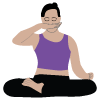 | First, a point is fixed at 4 to 5 inches from nose tip using the hand. Then the hand is removed and concentrate on that point. | Increases awareness and reasoning power. |
| 5. | Kaki mudra | Crow’s beak gesture |  | Air is sucked in through rounded lips keeping the tongue relax in the mouth. | Prevents the signs of aging like wrinkles, cures respiratory diseases |
| 6. | Nasikagra Drishti | Nosetip gazing |  | The gaze is fixed down at the tip of the nose. | Good for calming and stability of the mind, stress relief, improves concentration |
| 7. | Unmani Mudra | Attitude of mindlessness | 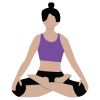 | Eyes open widely, awareness is fixed at Bindu, and then with breathing out, awareness is drawn one by one to lower chakras. | Stimulates all the energy chakras and balances doshas. |
| 8. | Bhujangini Mudra | Cobra gesture |  | From a sitting posture, lean forward, lift the chin up then air is gulped through the mouth to the stomach. | Cures digestive disorders, improves respiration and regulates eating habits. |
4. Bandha Mudra (Locks)
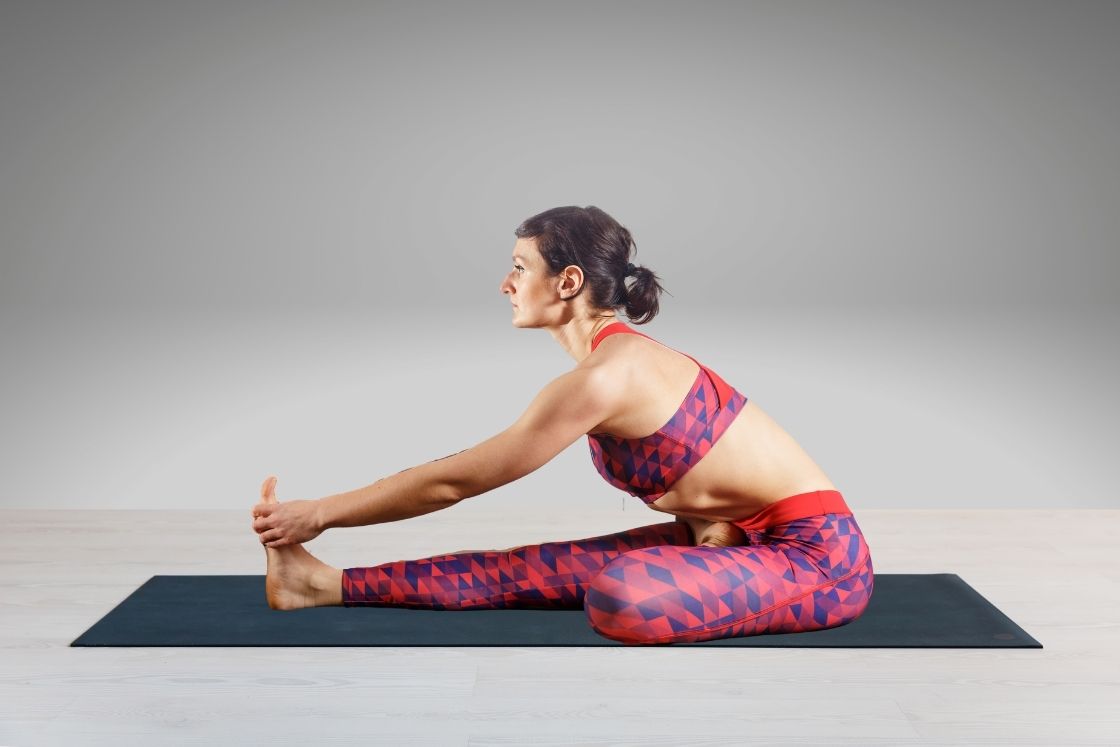
Bandha mudras involve using certain muscle locks called bandhas. These bandhas, when combined with mudras, engage specific skeletal muscles like those in your throat (vocal), chest (respiratory), and pelvis. By holding the life force or Prana using these muscle locks, it helps in kundalini awakening in your body.
*Scroll the table horizontally to see mudra pictures and benefits
| S.N. | Mudra | Meaning | Picture | Description | Benefits |
|---|---|---|---|---|---|
| 1. | Jalandhar Bandha | Throat lock | 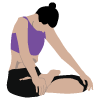 | Chin to chest locking throat | corrects double chin and prevents all the disorders of the thyroid gland |
| 2. | Uddiyana Bandha | Abdominal lock |  | Pulling abdominal muscles in and up | Strengthens abdominal muscles and diaphragm. improves digestion |
| 3. | Mula Bandha | Root lock | 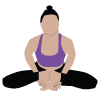 | Contract pelvic floor muscles and pull them up | Kundalini awakening, stimulates the nervous system |
| 4. | Maha Mudra | Great seal | 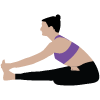 | All three bandhas are performed altogether after sitting in Janu sirshasana. | Destroyer of all 5 kleshas (sufferings), muscle strengthening, enhances immunity |
5. Adhara Mudra (Perineal Mudra)
Adhara mudras engage the pelvic floor organs; “Adhara” translates to Perineal, earning them the name Perineal mudras.
By practicing Adhara mudras, you stimulate the sacral chakra, balancing sexual energy within the body. This practice aids in redirecting energy into the solar channel (Pingala Nadi).
*Scroll the table horizontally to see mudra pictures and benefits
| S.N. | Mudra | Meaning | Picture | Description | Benefits |
|---|---|---|---|---|---|
| 1. | Vajroli Mudra | Thunderbolt gesture | 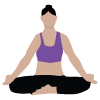 | Awareness is cultivated in the muscles around genital organ and then with full efforts, muscles are contracted. | sexual potency, prevents premature ejaculation, and improves the vigor |
| 2. | Ashwini Mudra | Horse gesture |  | The anal sphincter muscle is rhythmically contracted. | Effective in piles, Irritable bowel syndrome (IBS) and urinary incontinence. |
| 3. | Maha Vedha Mudra | The great penetrating mudra |  | Awareness is focused on the root chakra to activate it. | Awaken psychic faculties, stimulates your endocrine system |
| 4. | Maha Bheda Mudra | The great piercing mudra |  | Awareness is lifted from the root chakra up piercing all chakras one-by-one to the crown chakra. | Prepares the mind for meditation, and removes fear of death and decay. |
Benefits of Yoga Mudras
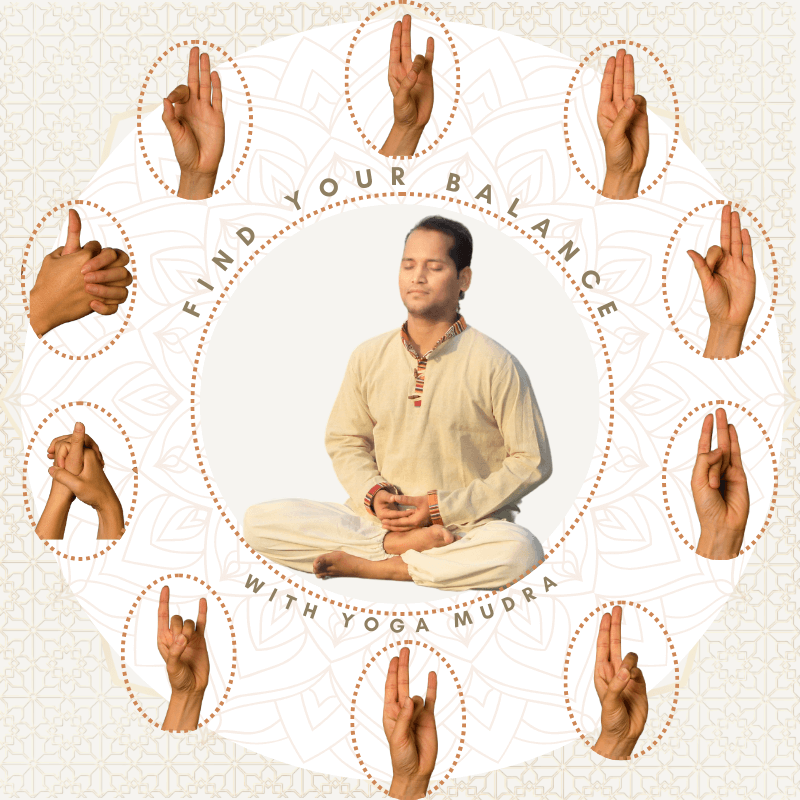
Mudras, powerful physical gestures in yoga, exert subtle effects on the body to replenish and revitalize energy. Each hand mudra corresponds to elemental energies, influencing specific brain centers. By balancing air, fire, water, earth, and ether elements, mudras facilitate healing and health restoration.
Various mudras offer diverse mind-body benefits, including:
- Stress, anxiety, and depression relief
- Improved brain health and focus
- Enhanced immunity
- Healing support
- Alleviation of body pain
- Reduction of high blood pressure
- Fatigue relief, especially during convalescence.
Spiritually, mudras serve as a pathway to transcendental consciousness, with some having the potency to stimulate the third eye chakra. These hand gestures channel the body’s energy flow, awakening chakras and Kundalini.
Regular practice of mudras yields significant benefits:
- Enhanced Concentration: Yoga mudras prevent energy dissipation, leading to increased concentration.
- Holistic Healing: Certain hand mudras effectively address physical and mental ailments such as insomnia, arthritis, diabetes, and heart problems.
- Metabolism Boost: Mudras balance the body’s elemental proportions, promoting metabolism. This aids in weight loss and reduces bad cholesterol levels.
- Improved Blood Circulation: Holding a yoga mudra for 10 to 15 minutes enhances blood circulation, elevating oxygen levels and reducing the risk of heart problems.
- Pain Relief: Mudras, especially hand mudras, aid in healing various body pains, increasing joint mobility and alleviating tension.
- Longevity: Yoga mudras elevate prana levels, contributing to increased life expectancy.
How do mudras work?
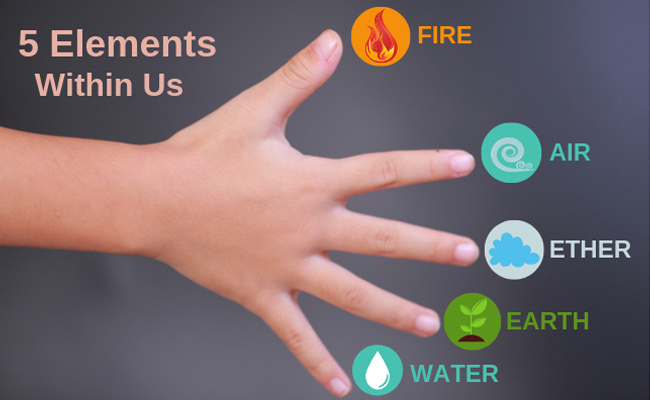
Mudra is the practice of influencing energy flow throughout the body using hand gestures. With the highest concentration of nerve endings, our hands create an ‘energy circuit’ when pressed or positioned in specific ways. This aligns our energy body through acupuncture meridians, promoting balance.
Hand mudras operate on the principle of the body’s five elements, known as Panch Tattva. Each finger represents a vital element. When a finger is pressed during mudra practice, it stimulates the corresponding element, fostering harmony within the body.
- Thumb – Fire element – responsible for our needs like hunger, thirst, and sleep.
- Index finger – Air element – responsible for movement and breath.
- Middle finger – Ether element – responsible for inner wisdom, intuition and overcoming emotional fear
- Ring finger – Earth element – responsible for body structure like bones and tissues, flesh and skin, and hair.
- Little finger – Water element – responsible for body fluids such as saliva, blood, sweat, urine, and semen.
Ayurveda teaches us that an imbalance in the five elements can disrupt Doshas, leading to negative impacts on both the mind and body. Yoga mudras play a crucial role in balancing energy within specific body parts, offering a means to enhance or diminish energy as needed. By employing mudras, we gain the ability to regulate our energy and, in turn, maintain overall health and wellness through strategic manipulation of the body’s internal energy flow.
A Perfect Analogy
To understand ‘how mudras work’ in a simple way, consider the human body an electric circuit in which current (the energy) is flowing through nadis or energy channels (similar to wires in an electric circuit). The five fingers are like the five terminals of a human electric circuit which are connected to specific parts of the body and mind.
When we hold or press a finger in a mudra, it completes the circuit. Therefore, corresponding body part or gland to that finger gets stimulated in the brain (Power supplier of the circuit). As soon as brain receives a signal to alter the energy pattern within the body, it channelise the energy to the corresponding part.
The way we arrange fingers in a mudra shows whether it will increase or decrease or balance one of five elements;
- Mudra to balance the effect of an element – The corresponding fingertip is joined with the tip of the thumb. For example, gyan mudra balances air element (which is corresponding to index finger).
- Mudra to increase the effect of an element – The thumb is pressed at the base of the corresponding finger. For example, aditi mudra increases earth element (which is corresponding to ring finger).
- Mudra to decrease the effect of an element – The corresponding finger is bent down to the base of the thumb. For example, vyana mudra decrease air and ether element (which is corresponding to index and middle finger).
Mudras create a loop of flowing energy
Keeping hands or whole body in a mudra for an extended period creates the pranic circuit (a loop of energy) in our subtle body. A pranic circuit can be understood as the closed-loop of Nadis which facilitates the flow of energy.
In yogic science, it’s said, the body gets diseases when prana (life-force) gets stuck in one place or there is a lack of prana in our body. The pranic circuit that a mudra makes keeps prana flowing indisputably inside our body. And, to prevent the lack of Prana, the loop that mudra creates doesn’t let Prana leaking out. This way a mudra helps in keeping the body diseases free, boost the energy level and enhances concentration.
How to do yoga mudras?
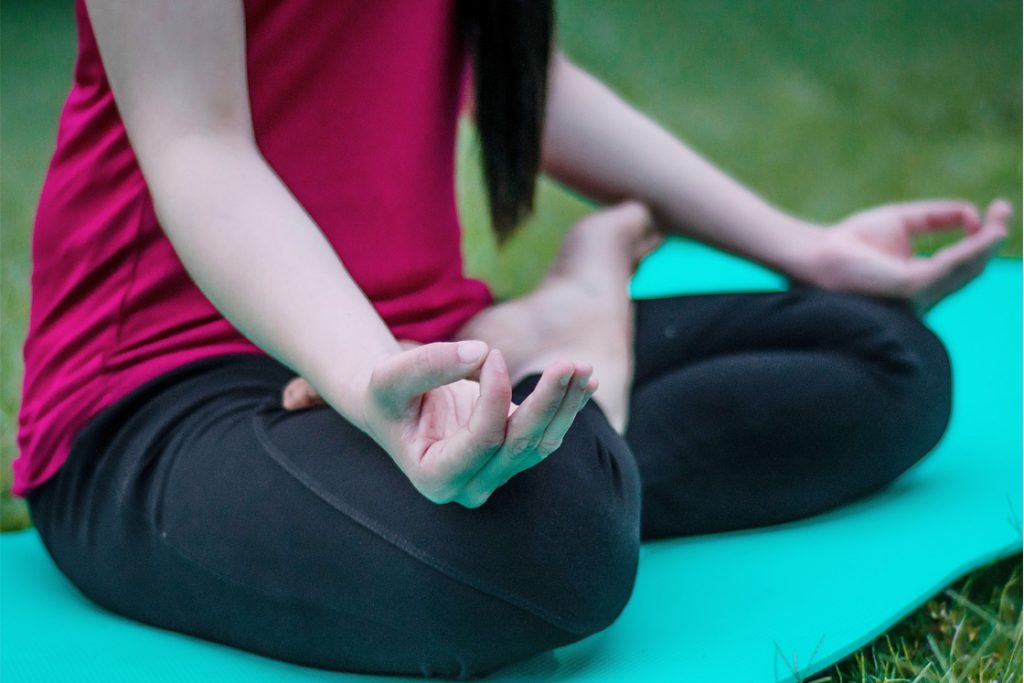
In yoga, we perform mudras in combination with meditation, pranayamas or certain asanas. Here the purpose of doing mudras is totally to deepen yoga practice and accommodate body & mind to be in pose for extended duration. It’s more or less like a spiritual purpose of doing mudra.
To begin your mudra practise, sit in a comfortable pose; preferably you can choose to sit in sukhasana, padmasana, vajrasana or any pose of your choice where your posture is upright and spine straight. One can choose to sit on a chair if not comfortable sitting in a yoga pose.
Once you’ve found your preferred sitting position, it’s a good idea to prepare your hands for better receptivity before doing any hand mudras.
- Rub your hands together and keep your awareness on your fingertips until they lightly heat up. It will activate the nerve endings in the hands which increase the effect size of a mudra.
- After rubbing your hands, ground your hands down and feel the touch of mother earth for a while. It helps to release accumulated tension and open up the energy channels in the palm.
- Now bring your hands in a mudra of your choice.
Before making mudra hand position, always put palms in a facing up position over your thighs or knee cap (wherever you’re comfortable) and then press fingers in particular patterns to perform various mudras. If you need to adjust your fingers, you can first make the hand gesture and then place hands with mudra on your thighs.
It’s fine if the free fingers in mudra are not completely stretched or straight; in deep meditation, free fingers are usually curled up eventually.
One should apply enough pressure between fingers so that you can feel gentle touch between the fingers. It shouldn’t be too much, otherwise, you will end up losing your focus and the therapeutic benefit of mudra.
It requires time to feel the impact of hand mudras. If you’re new in mudras practice, aim to hold a mudra for 5 minutes at least in one stretch. When you get comfortable keeping your hand in mudra for this duration, expand this time up to 15-20 minutes. The efficiency of any mudra increases the longer you hold it.
Read more: 9 common questions answered related to mudras practice
Are mudras scientifically proven?
Yes, mudras are scientifically proven! There are many studies published till date which show the therapeutic use of mudras.
To assess the effect of yoga mudra, S-VYASA University India, conducted a study in which they found holding a hand mudra for 20 minutes or more increases the surge of energy at fingertips. It’s measured by the EPI technique.
In this study, 61 volunteers were divided into 2 groups namely ‘control’ and ‘mudra’ group. In Mudra Group, volunteers were said to sitting quietly with eyes closed in Prana Mudra for 20 minutes. The control group also followed the same procedure, except for not practising the prana mudra
- In the yoga mudra group, significant changes were observed in EPI parameters as compared to the control group.
- The EPI (Electrophotonic imaging) variable, intensity, is a measure of the quantum activity of a subject, measured by keeping all the ten fingers one by one on the glass surface of the EPI equipment. It is represented in computer unit pixels and is a measure of metabolic rate.
Summary
Increased effect size after practising mudra shows there is a surge of energy that occurs at the fingertips when we hold the hand in a mudra for long enough (minimum of 20 minutes). Indeed, mudras direct energy towards the body and prevent it from decaying outwards.
Conclusion
Yoga mudra is a simple yet important practice of yoga because it gives you the ability to direct the energy within the body in different ways. The asanas and pranayamas can be understood as a preparatory practice that cultivates awareness of having Prana within us. Then comes the practice of mudras which lets you interact and manipulate the pranic energy.
This is the reason in hatha yoga tradition, mudras are practiced only after proficiency in Asana, Pranayama & bandha.
Mudra is associated with the changing mental and spiritual features of an individual. This change through mudra lets channelize the internal energy by affecting sensory glands, veins & organs of the body.
Mudras for health conditions

Unlock the Healing Power of Yoga Mudras with Our 7 Days Online Workshop
Starting from May 22. 8+ Hours of live interactive class and with certification.
Experience the Power of Your Hands with Science of Yoga Mudras.
Frequently asked questions
A. In yoga, there are more than 399 mudras mentioned in different texts and by different yogis. However, in tantric rituals, 108 mudras are used. Besides, taking yogic texts as a reference, in Hatha yoga pradipika 10 mudras are described, and in Gheranda Samhita, 25 mudras are described.
A. Some mudras may show effect in as less as 45 minutes. However, in general, mudras usually start showing the effect in 4 weeks when done consistently. If you’re going through some chronic conditions, it might take a little longer, around 6 to 7 weeks. Mudra’s working efficiency depends on your practice consistency and your current physical condition.
A. There is no harm in doing mudras during periods. In fact, some mudra (Apana mudra) helps to regularize the menstrual cycle. By the practice of mudra, the pain of periods can be eased by regularizing Apana movement.
A. Yes, mudras’ mechanism of healing can be understood by the fact that acupressure points are present on the hands. When we join fingers in the different arrangements in a mudra, acupressure points of the respective parts get stimulated. In this way, mudras open the blockage in the particular nerves of the body by stimulating acupressure points. Hence mudras have a healing effect.
A. If you’re new in mudras practice, aim to hold a mudra for 5 minutes at least in one stretch. When you get comfortable keeping your hand in mudra for this duration, expand this time up to 15-20 minutes. Ideally, mudra practise should be done for 45 minutes.

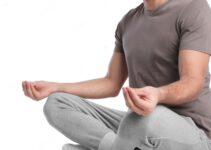



HI
THIS IS UMA SANKER SUFFERING DIABITIC, BACK PAIN RIGHT SIDE WHICH MUDRAS
HELP TO REDUCE THE ABOVE TWO THINGS
You don’t list them all. I do one instinctively that I have seen nowhere else. Both hands, bring together in prayer. Make a tent. Leave the thumb, index and pinky touching at the tips, and then layer the middle and ring fingers, one over the top of the other. No one can tell me what its called cause I guess no one else ahs seen it.
I think, what you are describing is one of the nine hand seals known as Kuji-In. They were developed in Japan and were used by ninjas and samurais. They also have different meanings and some mantras can be used when working with them. Try this site: file:///G:/Libros/Libros%20pdf%20y%20epub/Mudras%20-%20Owens%20-%20Kuji-In.pdf There’s a brief explanation of them and some bibliography about.
Super super. Live long..
Estupendo y muy completo informe sobre toda esta cantidad de mudras que la idea es practicarlos pienso, con su correspondiente chakra pero me pregunto si algunos de ellos se pueden utilizar con el octavo y noveno chakras (llamados Estrella del alma y de la tierra), en sus meditaciones ya que se encuentran cerca al cuerpo físico pero por fuera de el. Gracias por esta valiosisima información.
Hello
A quick note to let you know that numbers 13, 30, 32 and 33 are missing from your list. I’m curious if it’s an oversight or a deliberate one 😊
When I practice a mudra as prithvi mudra, I feel a great cold wave flowing in my body, its me ice. At first it’s refreshing, but after several days it becomes exhausting. It is as if my body fights to get rid of all this cold. Do you have any advice for me?
Thank you for your work which teaches me a lot.
Hi Merlin, thanks for your note and for being such an engaged reader. You’re right – numbers 13, 30, 32, and 33 are missing from the list. That was an oversight on our part, and we’re in the process of updating the list to include them.
Regarding your experience with Prithvi Mudra, the cold sensation you feel is a common response due to its connection with the earth element. Initially, it can be refreshing as it helps ground your energy, but if it starts feeling exhausting over time, it might be your body signaling that the intensity or duration of the practice needs some adjustment. Here are a few suggestions:
Adjust Your Practice: Consider shortening your sessions or taking breaks between rounds to allow your body to acclimate.
Complement with Warming Practices: You might benefit from incorporating warming mudras (like Surya Mudra) or gentle physical warm-ups to balance the cooling effect.
Listen to Your Body: Always pay attention to how your body responds. If the cold sensation becomes too overwhelming or draining, it’s a good idea to modify your routine.
Seek Guidance: If the issue persists, consulting an experienced yoga teacher can help tailor your practice to suit your individual needs.
Thank you for your kind words and for teaching us through your experiences. We truly appreciate your feedback!
அருமை
Hi As his hi
Prana. Iin IBS which mudra will helpful
Kindly can u guide me please
Thank u
My e mail
sbpurani @ mail.com
I am Sumitra Purani
Thanks again
Dear Ashish ji!
I am 53 years old. My doctors diagnosed me as a patient with Irritable Bowel Syndrome (IBS).
Would you pse suggest a good hast mudra to cure this.
I am very regular & benefitted from Vayu & Prithvi Mudra.
Brgds
Mr. Ashish,
First of all, thank you for such an all-encompassing post. I really don’t think one may need to seek out other avenues for Mudra knowledge after a thorough read of this post and some others on the website as well.
However, I had a question. Why was not Aditi Mudra included in the list? And in spite of having so many blog posts on mudras, even having rewritten blog posts about previous mudras, why do we not have a dedicated post for Aditi Mudra? It has tremendous benefits I heard, but gets little to no recognition in the online community. Although this is changing, it still needs to improve at a better pace.
And does Aditi Mudra help with thickening of the bones and muscles to give a muscular-ish physique? Since the aim of aditi mudra is to *increase* the prithvi in the body instead of balancing it (like prithvi mudra).
Thank you so much, Sir. I really am a very big fan of this website. Sending my best.
Good day!
Is there a combination of mudras, that speeds up perception so, that everything around you seems to slow down?
Is there a other way (not mudras, but breathing techniques, or something else) to speed up perception so, that everything around you seems to slow down? Only this will really help in a fight against a fast opponent, and even more so against a knife.
Best regards, Konstantin Utolin,
when i practice mudras i see almost instant results and when i use energy mudras i can feel the energy circulate everywhere but my lower body. any insight on why?
The difference in results when practicing mudras and energy mudras may be due to the focus and intention behind each type of mudra. Regular mudras may have more immediate tangible effects, while energy mudras might be more focused on subtle energy flow and might take time to balance throughout the body. Individual experiences can vary, and it’s essential to continue exploring and observing how different practices affect you personally.
Hi Ashish
May you share a full list of references and resources on Mudras for both physical ailments but also mind. The Ayurvedic Psychology side of things. Are their references that talk about the other hand positions of not only touching tips, base of thumb or taking finger tips to base of thumb as far as effects – but also clasping / encasing fingers with the other hand , keeping extended fingers , and connections between specific pranayama practice in relationships to mudras?
Thankyou in advance for contributing to my research and practice
Thank you so much for giving such a profound knowledge. I read your posts related to mudras for weight gain as I really wanted to gain weight . Sir i want to ask you ..that..can I do two mudras one after the other. I’m dominant in fire hand and a little mix of water hand as well. So can I do prana mudra ( as I read on your blog that it fixes pitta dosha ) and Aditi mudra ( for weight gain ) ..please tell how should I incorporate these two into my day .. should I do them together or should I first practice one for weeks then nxt…but i really wanna gain weight.. please tell sir .
Thank you so much.
Thank you Ashish!!
Do you provide consultation in this regard or know an experienced ayurvedic vaidya / practitioner in Bangalore who can assist me with this? This is for my 2 year old kid who has epilepsy.
Hello Ashish Ji,
Many Thanks for these details about mudras and bandhas. May I also ask if you could also add informartion regarding when not to do a certain mudra? I wish to understand from the perspective of one’s physical and medical condition. For example, if someone has epilepsy which mudra is best to manage it and which mudras should be avoided? similarly, if someone is is suffering from Hemorrhoids then which mudra is best to cure it and which should be avoided?
Many Thanks again!
Sankalp, mudra science work on the fundamentals of pancha mahabhutas and doshas, therefore, without knowing a person’s individual body constitution (Ayurvedic body type) one can’t tell which mudra is beneficial or avoided according to one’s physical and mental condition.
For epilepsy, mudras which calm the mind and strengthen the nervous system are good in general. There is one specific mudra called Mirgi mudra to get relief from epilepsy. You can read this article for more information.
A kinesiological muscle test can accurately calibrate the reflex zone, blocked acupressure point, homoeopathic remedy, yoga mudra position and its duration, and finally the level of consciousness (Dr David Hawkuns table of levels of consciousness), where a level of more than 200 is required. Your level is 150. Back mudra 5 minutes, Padma mudra 10 minutes.
Sou reikiana nivel III e que os símbolos adjuntos a posturas
Sabe-se e recebe-se uma densidade de energía positiva
Reiki orixa magnificado em alinhamento corporal quantico verticalizado conecta-se 1 campo
Vibratorio expandido aonde as maos podem ser utilizadas como forma de Gratidao por ter os nadis ativados no tempo e espaco de integracao
Dear Ashish,
My brother-in-law have stroke and his left leg and hand paralyse and he had mild heart attack.
Can he do yoga mudra with one hand?
Please Sugg
Moreover, how many mudras can be done in a day.
Yes, with the support of some bolster or cushion for the right hand, he can do mudra with one hand. Don’t hold it continuous for a longer duration. There is no such restriction for how many mudras can be done in a day, however, in this case, at one time he should do one mudra only.
I am trying surya, Prana and vayu Madras for cataract since last 2 months, but till now do not see any effect. Should I continue?
Certainly, you should! Mudras may take time to show its effects in some cases; as in the case of cataract. For cataract, you can also do Prithvi Mudra. However, don’t rely solely on Mudras, medical treatment alongside should go.
Please text me more info about mudras
Hello, yesterday I did Vayu mudra for 45 minutes and then Surya mudra for 45 minutes. So totally I did Vayu and Surya mudra continuously for 90 minutes. Is it ok to do that or will it affect me? I had anxiety last night. Please guide me.
First of all, if you’re a beginner in mudras practice, it’s not recommended continuously for 90 minutes. Take a break in between, sometimes the body can’t hold elemental energy fluctuations that take place while doing a yoga mudra.
Coming to your question – generally doing vayu mudra alone decreases Vata dosha which helps calm the overactive and restless mind. So you should have a feeling calm, rather than anxious, after this mudra. If you’re having anxiety, it primarily may be because of the follow-up Surya mudra’s effect. So if surya mudra is really important for you, don’t do it immediately after vayu mudra.
Ok sir. So can I do Vayu mudra in the morning as I have PCOD and hypothyroidism and Surya mudra in the evening for weight loss? I used to do it before then stopped but now I have started doing again. And thank you so much for guidance. ?
Yes, it’s a good choice to do one mudra in the morning (for hypothyroidism) and one in the evening (weight loss). Surya mudra works well for both conditions, however, you can do Apana vayu mudra if feeling anxious again.
Thank you for such an awesome article on mudra.
Male: 33
After reading a book on Mudra, I came to know that I have Earth and Water element imbalance. I have heaviness feeling in my legs and urine incontinence issues in house and when travelling out and it becomes very difficult to travel for long hours and I where an adult pad. My doctor told me to do a lot of tests (urine, pus cells, testosterone, kidney, prostate, thyroid, TSH and other tests) and all the tests were fine and good and he didn’t give me any medicine. No sugar, no thyroid. Though, I did have a very loss B12 count and my doctor told me to have B12 supplements for 3months. Bcz of B12 deficiency, I feel very low energy, agitated and get tried very fast.
The water imbalance is creating ear problems and body balancing issues, dry mouth and throat, and a very very stiff lower back all the time. I have visited many doctors and have taken medicines (allopathic and ayurvedic both) for urine and bladder problems but nothing seems to work.
What mudras shall I do to solve all my body imbalances?
Please guide me.
Thanks in advance
Hi Abhishek, as you have already mentioned your body is facing Earth and Water imbalance (and it gets more clear with your symptoms) – you can work on mudras of Ring and Little fingers to restore the balance of these (respective) elements.
First, you should take care of Vitamin B12 deficiency, for this, do Prana Mudra consistently for some time. Make it a practice of sitting with Prana Mudra hands for 15 minutes minimum.
Then for water imbalance, do practice Varun Mudra. It will balance the water element in the body. Urine incontinence is particularly not related to water imbalance, you should work on strengthening your pelvic floor muscles and for that, you can try Vajroli Mudra and Ashwini Mudra.
Hope it will help you and Sorry for such a delay in reply to your comment 🙁
Please mudras for weight reduction
This was very informative! Thank you<3 I was looking for the meaning of very specific and intricate mudra I am wondering if you could be of assistance?
kindly suggest mudras for kidney simple cysts.
Hi Ashish
I am 63 years old. Please suggest mudras for getting sound sleep.
Can I do mudras while walking or in a standing position?
Thanks
Gopala Krishna
have been studying the Mudra’s do you mind a few questions- how is the energy affected if the tip or base of thumb(or finger is used? or if the other fingers are open vs closed? also in your class on joints one was done on one hand another on a different can any combination be used? the have been looking for the explanations.
Thanks for the good article
You can understand how mudra affect energy based on the fact of reflexology. Reflexology deals with study of different pressure points present on our palm and fingers. In mudra practice we activate these pressure points. The beauty of mudras is that each hand mudra position corresponds to the specific organs and systems of the body. Therefore different hand position shows different effect.
Can mudra practice help in controlling Cholesterol levels? If yes could u pls explain which one should be followed and how long?
Yes, there are several mudras one can practice to lower the bad cholesterol levels – you can check out these “Mudras for a healthy heart“. For example, Surya Mudra and Ganesha Mudra is the best you can practice for 30 to 45 minutes each day.
Ashish, I have been practicing visualization for goal manifestation since around 10 years. All of a sudden for the last 5 days, I am not able to visualize any images of objects/people or colors when I close my eyes – it is just like a plain black screen. How can I get back the ability to visualize upon closing eyes?
It’s a very different & heart breaking experience. Please suggest on what can I do to get back to normalcy.
Vaishnavi I am not such an experienced practitioner of visualization techniques as you seem to be, 10 years is really a long period! Though if you’re looking for mudra’s ways to help you in this condition, I suggest practice Kubera mudra in guided meditation and surabhi mudra. Just do these two mudras before your regular practice and then try visualizing on goal with closed eyes. I have practiced these mudras and it has worked well in goal manifestation, However, exactly for the visualization case, I don’t have a particular experience.
Thanks Ashish. I do visualization using Chinmaya mudra.
Current problem I am facing is not related to visualization technique. It just about closing eyes & trying to imagine any place/fruit/person/color – not particularly for goal manifestation, but any time in general. At any point of time, we would be able to just close eyes & imagine objects/place/people/colors/etc. All of a sudden since last 6 days, I am not able to do this – when I close my eyes its just a plain black screen & how much ever I try hard, I am not able to imagine objects/place/people/colors/etc, not even the faces of my family members.
I need help in coming out of this problem.
Vaishnavi I found a related article to this; they called this neurological condition Aphantasia. Very rare, when a person doesn’t see images when they try to CREATE an image in their “mind’s eye” but can be corrected by working with your mind. I will share the article with you through email. Hope it will help.
Hello and thank you for your site. A friend recommended your site to learn about mudras. He suffers a similar problem with sciatica and perineum pain and impressed that mudras helped him more than anything. Since some kind of injury last winter (March) I have been doing physical therapy and deep breathing, and now Tai Chi for a pudendal compression (as diagnosed by a physical therapist), and have made much progress, though there is still dorsal nerve aggravation in the genitalia. He urged me to seek out the correct mudra, and, frankly, I am overwhelmed by the information. Can you find time to direct me to the finger/hand mudra where I may start with 15 min or 30 min sessions. ? I would be very grateful. It is a debilitating occurrence for many men, bicyclists and composers who sit too much in incorrect postures and damage themselves. Thank you.
Silvio for such a specific condition related to the pelvis or genitals, a hand mudra may not show you effective results. Other than hand mudra, in yoga there are other types of mudra too which especially work for relaxing pelvic floor muscles; they are mentioned under “Adhara (Perineal) mudra” in this article.
Vajroli and Ashwini Mudra will definitely help you with this.
Thank you very much, Ashish. I will investigate these.
P.S. I will start with Ashwini Mudra, Ashish. That looks more approachable at my level, given my anxiety around the condition, and see how improvement arrives. It seems like the former could perhaps complicate my condition without proper and slow introduction and attainment of muscle control. Thank you again.
Hello Ashish,
I want to calm/slow myself down and be composed/confident/controlled in general and especially in pressure situations like an interview or on a stage. I tend to speak fast (normally and even more in pressure situations), eat fast and my response might come across to other person as rude/abrupt etc.,
Could you please help me with this?
And Thank you so much for this article. Quite useful.
Vamsi as you have asked this question in this article, I think that you’re looking for a solution to this through some mudras practice. I think meditation mudras will really help you cope with this behavior. If you can do, devote some time of your daily schedule to meditation in Gyan Mudra or Dhyana Mudra.
There is a psychological fact, persons who usually speaks less but when speak, speaks fast; it’s said they keep secrets or they aren’t able to express themself. For this, you can practice Shankh Mudra without being in a meditation session.
Yes. I am looking for mudras.
Regarding Shankh mudra, since it need not be done in meditative pose, can it be done while am at work or in a meeting where am not concentrating on it but rather being casual about it? Am sorry if this comes across as a naive question, am totally new to this.
Thanks Ashish.
Shankh mudra I referred for speaking issue; however, if you want something you can do at work to calm yourself down then you can try chin mudra. For this, bend your index finger at the base of the thumb, rest three fingers as it is and bring this hand arrangement on the knees keeping palms facing downward. It will help you to be grounded and connected in realtime.
Hi Ashish!
I m 48 years old.
Pse suggest which Mudra benefits & cure Naval Displacement (Nabhi Chakra). Tkd
There are many mudras for navel displacement; apana mudra, shankh mudra, prithivi mudra. All these you can do while putting hands in mudra near navel for better effectiveness.
I Got clues to most of the questions I had wanted to ask. Pls suggest various hand mudras I can use for LETTING GO and FEARS AND ANXIETY Will love to let me know the duration per day. Thanks for a great job.
Which mudras are good for curing inguinal hernias
Prithvi mudra and Rudra mudra.
The Natya Shasta Mudras, used in dance are based on the same principle? Using 5 elements?
I don’t have enough information to be sure about this. But since mudras have been a part of rituals, dance, and drama in India so maybe they used the same principles on which whole mudras are based upon i.e. 5 elements.
Hi! Can i do Apan vayu mudra ( i want to strengthen my heart) and gyan mudra( i wanna relieve my anxiety) both everyday? I had read doing most of the mudras should be stopped after a person is healed. Can i do apan vayu mudra always or is there time limitation?
Hello! Mudras were actually practiced in yoga for spiritual growth to assist the main Pranayama and meditation practice. Therapeutic benefits or healing through mudras is just a side product of it, therefore, mudras can be done after a person is healed, as long as one is comfortable with it.
Hii I have done Udana mudra once again I didn’t do but sometimes I feel nerves discomfort near the throat and also I have tonsils is this because of mudra?
Udana Mudra is considered good practice in case of the tonsil or other throat problems. It stimulates the Udana Vayu in the body which has seat at the pit of the throat. Usually, it has a soothing effect but If you’re feeling discomfort on practicing this mudra it might because of inconsistency or overdoing. Please do it under the guidance of an expert therapist. Though you can try Shankh Mudra as a similar alternate if still not feeling comfortable with Udana mudra.
Wonderful article!
can u please tell me if there’s a mudra for manifesting desire?…& how long this type of mudra take to work? I mean how much time in a day, which part of the day and how many days should I perform?
I am 70 years old, high BP on treatment. Very impressive pictures, with the short practical notes.
I would like to know what type of Mudras, I have to practice daily to control the bp as well as mudras for protecting the heart. Currently, I am doing 1)Nadi sudhi2)chin mudra, chank, Adhi, branchial, and sunya, finally Anjali. I got this from one of the yoga schools in Chennai.
Request your guidance, and mail me the books published by you, regarding disease-related, to reduce the stress and tension and sense of well-being, available to order online.
Thanks,
From Chennai, Tamil Nadu
Hello Ashish.
First of all thank you for your awesome blog and the great information you provide us with it. I keep coming back again and again :).
Today I have a question for you. I’ve been practicing the Rudra mudra but I’m not sure if this mudra can also activate the other two lower chakras (root and sacral). Also abusing of your time I’d like to know if it’s okay to practice with a combination of mudras. Let’s say gyan in one hand and rudra on the other.
Thanks again for your time and for sharing this amazing knowledge.
V.
Hello,
Well written information on mudras. Please guide me for Dhyana mudra what is the longest you can safely do this mudra for when doing meditation. i.e. if you are doing mediation for 1.5 or 2 hours daily is it safe to keep this hand gesture for this long or would it be an overdose as it is well above the 30 minutes you mentioned? So then would Bhairava mudra be safe to do for a longer period and no fingers are touching each other? Also would both Gyan mudra & Dhyana mudra be the best two mudras to help achieve concentration during meditation?
Thanks
Sunny, I haven’t experience of meditating 1.5 – 2 hours regularly. However, I can assure you, placing hands in dhyana mudra for more than 45 minutes wouldn’t create any side effects for your body or brain. 45 minutes duration is just recommended based on scientific studies on mudras for optimum results.
For bhairava mudra – If you’re really in deep meditation during this period, it doesn’t matter whether your hands in Dhyan or bhairava mudra because both mudras are quite identical (expect in bhairava thumbs doesn’t touch) and both used for meditation.
In Gyan and Dhyan mudra, a more comfortable and suitable mudra for meditation is Dhyan mudra. Though you can use Gyan mudra also as per your convenience.
I am Mudra Therapist and My experience of Bhairav or Bhairavi mudra is that it is very very powerful and after sometimes, I have felt lots of heat in body and headace and same feeling was there with my wife also. So one has to exercise care while practicing this mudra. No where in the text, the above effects are prescribed but after practising for few days, I have to leave practising this mudra
It’s fantastic and very detailed info on mudras. They work wonders on our body, mind and soul and are very simple to perform.
Thanks 🙂
Which mudra to be practiced for hypothyroid, and for how long. Do pranayama and asanas also.
Surya Mudra and Shunya Mudra stimulate the thyroid gland to produce thyroid hormone so it can be practiced in case of hypothyroid. One such pranayama you can practice for hypothyroid is Bhramari. Try it to see effect instantly!
Which mudra is best for mind anxiety and concentration and other mental imbalances
Gyan Mudra, Apana Vayu mudra, and Dhyan mudra are helpful in the above conditions.
Hello
Thank you for your advice for post nasal drip Linga Mudra. Is it ok to do this Mudra if one has bp if so for how long?
To balance high bp, you can do akash mudra, apana vayu, and surya mudra.
Kindly advice Mudra for post nasal drip with cough. Appreciate your explanation.
Thank you
Try Linga mudra for postnasal drip with a cough.
My name is Raghavendra and interested in meditation and Pranayama. I have been using Chin mudra during meditation but still I am not able to concentrate. Can you suggest any other mudra which helps me to concentrate and less thoughts during meditation.
Thanks
Raghavendra
You can opt Dhayna mudra & other variations of Gyan mudra for concentration during meditation. However, mudras are effective in meditation practice but your concentration also depends on other factors too.
Try to meditate in a peaceful environment & it’ll be easier to concentrate.
what should be the time gap period in two different Mudras.
If you’re practicing a mudra continuously for 30 minutes, silently sit for 4-5 minutes (it can be in Dhyan mudra). On the other hand, if you’re practicing a mudra for 10-15 minutes, a 1-2 minute gap is enough before you perform another mudra.
Hi, Your Mudra posting are amazing. What kind of mudra can cure Tinnitus problem.
You can practice Shunya mudra & Prana mudra for Tinnitus problem. It’ll ease the Prana flow over the head region.
Very informative. Are there any side effects of mudras? What are the precautions to be taken while performing mudras? Can apana vayu mudra and prana mudra be practised together? How many mudras can we practice each day? Please reply.
You can refer to individual mudras to know their precautions & side effects (if any) from here – all yoga mudras
You shouldn’t practice Prana mudra along with apana vayu mudra because they work on the stimulation of two opposite vayus (energy) in the body. Yeah, you can always practice one mudra after another.
The number of mudras you can practice as much as you want & as long as one is beneficial for you.
The content is simple and easy to follow. Very helpful too. Could you pls explain the back mudra. The left hand finger positions.
Thank you,
Regards
Mrinalini
Mrinalini thank you for appreciation.
Back mudra is practiced with both hands to stimulate lower and upper back separately.
The position of life hand fingers is – the tip of middle, little finger joining the thumb while keeping the other two fingers (index and ring) as straight as possible.
You can also exchange the position of fingers between the left and right hand i.e. with the right hand – position of life hand fingers and with left hand – position of right-hand fingers.
Well explained Mudras indeed. I live in the US and wish to get a copy of your Book.
Hello K.S.Subramanian, We haven’t yet organised this content for a Book. However in future, if we publish a book on Mudras, we’ll surely inform you about this. Thanks 🙂